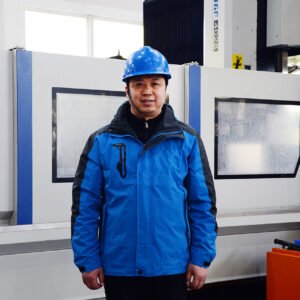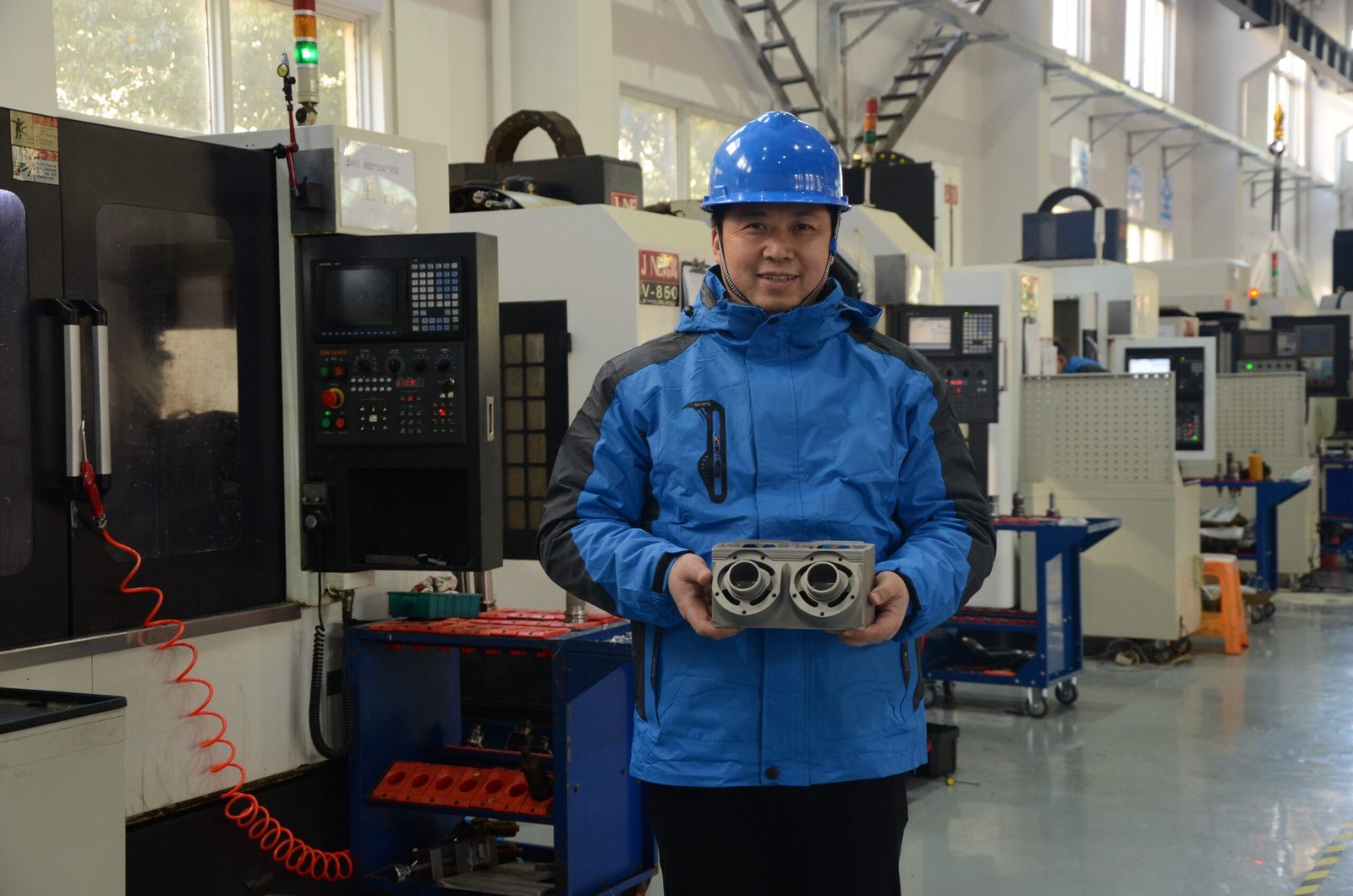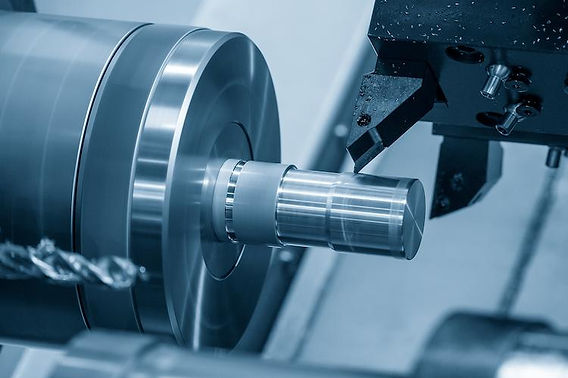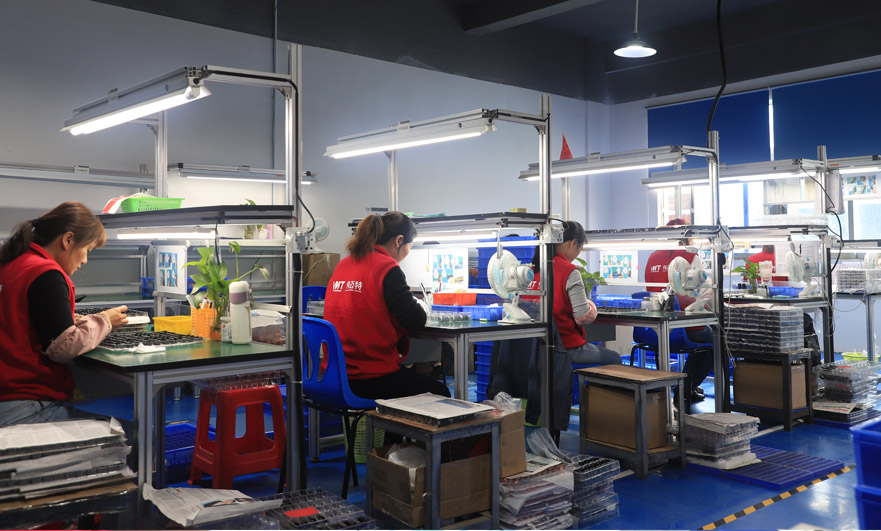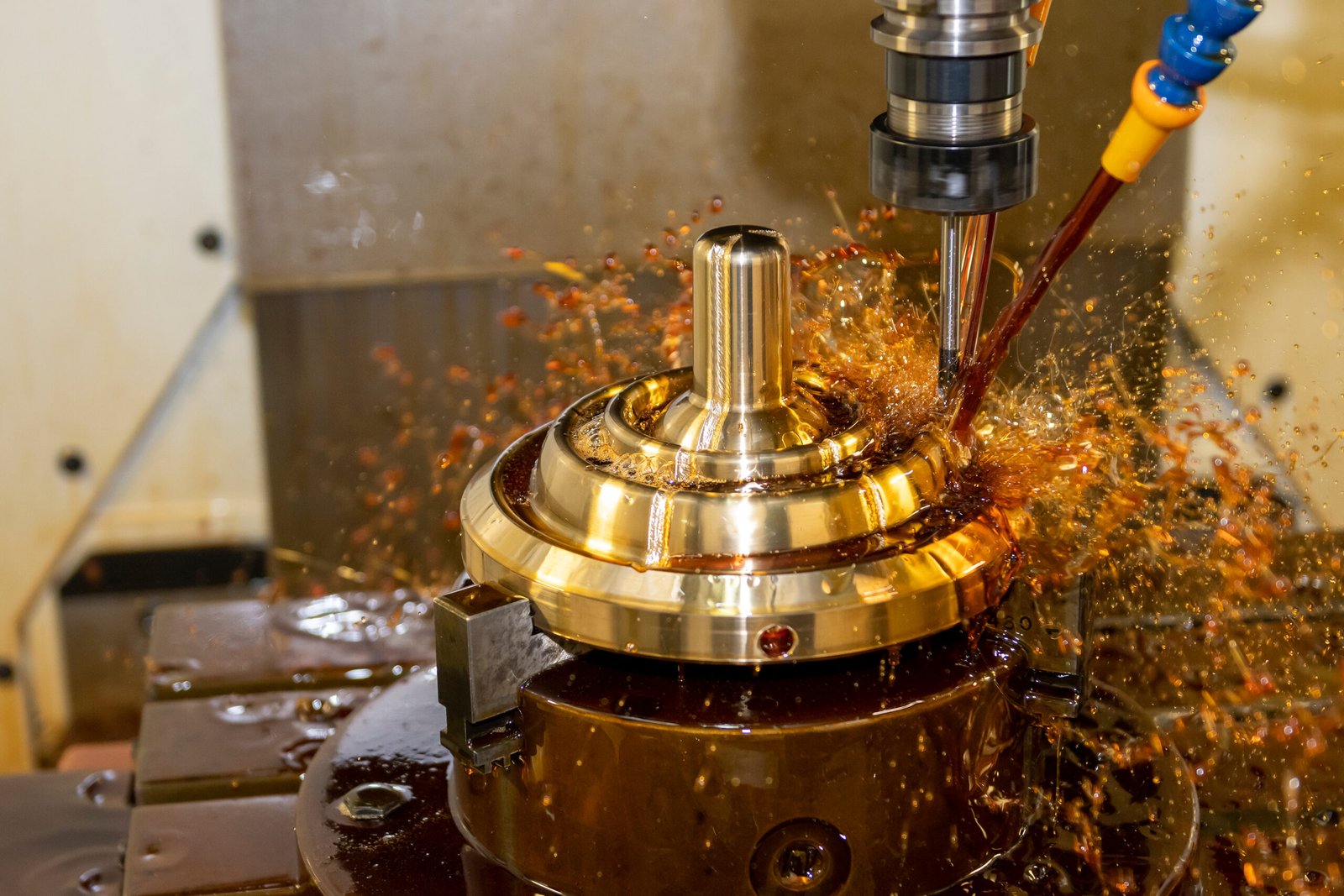When it comes to the sea, even a minor malfunction of the rigging parts can result in a huge disaster. Worn-out parts, corrosion, as well as loose fits may compromise safety and performance in the vessel.
And, for those tired of persistent repairs and unreliable parts, in this blog, there is a solution for them. With the use of CNC technology, the offered rigging components increase the parts' precision, strength, and durability to withstand all sorts of conditions and challenges faced at sea. Let’s dive in!
1) What is a Rigging System?
“In the marine industry, a rigging system may be defined as a system of wires, ropes, and chains, as well as hardware, which acts as a support for the masts and helps control the sails of a boat or a ship.”
Rigging systems enable a boat's mast to be held in an upright position while also empowering a sailor to control the sail with precision. Bear in mind that there are two important rigging systems, standing rigging and running rigging.
- Standing rigging is an example of static rigging designed to support and fix the mast in position. Components within standing rigging support the mast and include shrouds and stays that counter the wind and motion.
- Running rigging involves the sails' raising and lowering. It is made up of the more "active" parts of ropes, shrouds and sails, which may be referred to as halyards and sheets.
Okay, so the rigging system supports the mast, manages the sails, and balances the wind loads on the boat’s structure. A vessel without rigging would be hard to control and move.
Rigging is required for all types of boats. Parts of a sailboat rigging assist with movement, help yachts with cruising and racing, and support the structural and equipment on naval ships. Whether for leisure or duty, rigging remains a key part of marine operations.
2) The Role of CNC Machining in Rigging Hardware
CNC (Computer Numerical Control) machining is a technique of manufacturing by computer-controlled equipment that saws, shapes, and drills components to specified outlines. It is highly applicable in the marine industry due to its unmatched precision, repeatability, and its capability to create parts of ship rigging with very close tolerances.
Moreover, CNC machining does offer an edge over traditional approaches due to its consistency and speed. Unlike manual fabrication, which struggles to reproduce exact measurements over several parts, CNC machines produce identical components in bulk with minimal variation.
Examples of marine-grade rigging hardware include shackles, turnbuckles, clevis pins, and chain plates. These shackles, as well as turnbuckles, undergo constant saltwater and UV exposure. The bronze, stainless steel, and titanium metals used to make these parts can undergo CNC machining, ensuring they are cut with precision.
3) Key CNC-Machined Rigging Components
With the vast array of different types of rigging parts available in the market, each component also serves a distinct and vital purpose. With the help of CNC machining, these components are manufactured to the utmost precision and accuracy, which means they will not fail the vessel even in harsh conditions.
i) Turn Buckles
To help keep the mast positioned correctly, rigging components must have a turn buckle. It allows you to easily tighten or loosen the cables. They can be used to increase or decrease tension in a matter of seconds. With CNC machining, the turn buckles can be relied on to have polished threads, precise fitting, and be easy to turn while also being very strong.
ii) Swivels
With swivels, it’s possible for two parts to rotate independently without the associated twisting of a rope. They keep the lines from tangling. Shackles that have swivels that are strong for heavy loads, while also free spinning, help in decreasing the stress applied to your rigging.
iii) Clevis Pins
Shackles and toggles can be connected using clevis pins. They can be used to bolt and secure parts while also allowing free movement. Thanks to CNC, the pins can be manufactured to the exact dimensions, which ensures they do not wear out or shake loose. Apart from this, because of the smooth finish, the pins can be easily removed when required.
iv) Shackles
They are identified by their strong U shape with a pin in the middle. Shackles can be used to bind ropes, chains, and wires together. Other places where shackles can be found are on board, and these are the places where they can be relied on to work nicely.
v) Toggles
Toggles are used to allow slight movements in rigging lines under strain. Toggles help in ensuring no other parts of the system get damaged. Moreover, toggles help in the proper fitting of the parts to avoid excess friction. Additionally, they assist in cushioning wind movements or jerks to the system.
vi) Sheaves (Pulleys)
As provided in the definition of sheaves, they are used as holders of ropes. Sheaves also serve to make friction minimal. Sheaves are also manufactured using CNC, which provides them with even cuts. Apart from this, sheaves in sailing serve to protect the ropes and also assist in the ease of sailing.
vii) Rigging Screws
As the definition states, rigging screws can be visualised as turnbuckles with a closed body. They seem to be more orderly as they ease off the tension. Moreover, they also help in advancing the aesthetics of structures as they are made with precise grooves using CNC. Well, rigging screws can be fitted to exposed areas without fear of corrosion.
viii) Custom Connectors and Bushings
Custom connectors are used to make the structures more adaptable. Connectors are important in fitting augments or gaps in structures. Custom connectors are made using CNC and allow the customer to specify the dimensions they want. Change of angles, dimensions and materials is also granted to fulfil customer satisfaction.
CNC machining provides enhanced performance, increased safety, and a longer lifespan for every component of your marine rigging. Whether for professional or recreational sailing, these parts instill a sense of power and assurance as the boat navigates through the sea.
4) Materials Used for CNC Marine Rigging Components
The marine equipment rigging parts confront the most difficult challenges: saltwater, winds, heavy loads, and a full range of motion. Marine CNC machining parts help in these materials due to their accuracy, safety, and reliability.
- Stainless Steel (316)
Stainless steel 316 is the most common metal used for marine rigging. Its strength, durability, and resistance to corrosion in salty air and water allow it to be widely used. You can find it in turnbuckles, shackles, and rigging screws.
CNC machines cut stainless steel 316 to the parts specifications, which provides the turnbuckles, shackles, and rigging screws with tight threads, clean holes, and a perfect fit every time.
- Titanium
Titanium steel is used in racing yachts and high-performance boats. Its use with marine CNC machining assists in preserving the strength and rust resistance needed for heavy marine conditions.
- Bronze
Traditionally, bronze is chosen in the marine world. It is known to resist corrosion and last many years even when submerged. It is commonly used for sheaves, bushings, and other moving parts. CNC machines bronze parts, and the result is strong and smooth parts that are built to endure.
- Aluminium Alloys
When weight matters, aluminium is ideal. It may not be as strong as steel or titanium, but it does not rust and performs well under lighter loads. Aluminium is heavily used in parts that need to be custom-designed as it is easily and quickly cut by CNC machines.
CNC machining ensures all these materials perform at their best, accurately, and durably, while also being ready for the sea.
5) Benefits of CNC-Machined Components at Sea
When at sea, every component of your boat requires flawless functionality. Rigging parts are important for properly securing and balancing a racing yacht, fishing boat, or sailing cruiser. Let’s discuss their common benefits.
+ Precision Fit: Each part, such as shackles, pins, and screws, is made by CNC machining; thus, they are made to order. As such, they are designed to reduce movement, thereby preventing wear, shaking, and vibrations.
+ Corrosion Resistance: As with all CNC machines, smooth and uniform surfaces are a necessity, meaning salt and moisture are not trapped. This is especially useful with marine-grade metals like titanium and stainless steel. As a side, better surfaces help fight rust, meaning lower maintenance.
+ Safety Under Load: Each section of a marine rigging is not easy to deal with, as it carries its own set of challenges. As with all CNC machines, the monotonic and uniform nature of their build allows for no weak points. Therefore, the nominal CNC shapes coupled with the clean cuts are essential as parts become more resilient to heavy loads.
+ Consistency in Production: CNC machining provides fleet managers and those who need backup parts for quick repairs, uniform parts and consistent results with each CNC machining process. Uniform parts mean that replacements are categorically safe and simple without the need for additional measurements and adjustments, and guesswork.
6) Applications in Different Marine Vessels
CNC rigging parts are a common feature across many marine vessels. The following are the CNC components of marine vessels with specific applications:
a) Sailing Yachts
Sailing yachts have precise and accurate controls for the sails and depend on CNC parts for smooth and safe adjustment of the sails. Parts like shackles, turnbuckles, and sheaves are mounted to sails, and their accuracy enables them to bear strong winds for prolonged voyages.
b) Commercial Fishing Boats
Commercial fishing yachts are equipped with powerful lifting and rigging gear to control the nets and lines. These components are heavy-duty and designed to withstand harsh, wet marine environments. Parts are designed with CNC machining processes to withstand wear, rust, and breakage. Shackles and bushings manufactured with CNC machining enhance the safety and efficiency of daily operations.
c) Naval Ships
Naval ships are equipped with masts, antennas, and anchors that need to be secured and captured with fully reliable systems. Components made through CNC machining lines are made to suit military standards in terms of safety and operational efficiency.
Well, CNC components are made to exact measurements from rugged stainless steel and titanium for Naval CNC components to endure constant stress and harsh weather.
d) Racing Boats
In racing, speed and weight are of primary concern. For such purposes, CNC titanium and aluminium components offer unmatched strength while simultaneously being lightweight.
Toggle and rigging screws, along with several fittings, are precision-engineered so that they may be used as race components. Such precision ensures lines are readily adjustable to be used to aid in the reduction of drag during racing.
e) Offshore Platforms
You know offshore structures are constantly under attack from salt spray and heavy tension from mooring lines. In these cases, CNC-machined components such as structural supports, cable systems and anchoring points, as well as offshore moorings, are used as offshore platforms and equipment.
Therefore, through custom CNC machining, such components surpass extreme stress and corrosion to protect the offshore platform in terms of stability and safety over a long period of time.
7) Why Choose CNC Over Traditional Manufacturing?
Considerations like accuracy and trustworthiness are priorities when producing rigging components for marine applications. Manual cutting or hand milling might be adequate for basic tasks, but they cannot compare to the CNC machine’s performance. For the reasons outlined below, using CNC brings a significant advantage.
Enhanced Precision and Finish Quality
Accuracy in each and every CNC machining operation is achieved as a result of digital drawings. Each and every cut, hole and thread is done to the precise measurement. Consequently, the parts that are meant to be under a load and move are much more likely to be cleaner, smoother, and more tightly fitting.
Reduced Manual Errors
Traditional techniques are known to have more errors due to reliance on manual intervention. However, CNC machining is a fully automated and reproducible process. Programs are configured for each part, and consistency is guaranteed. This leads to less waste and no rework on the components.
Greater Design Flexibility
Want something with an uncommon angle? A custom part? No problem, CNC can do it all. It gives you the ability to create very intricate designs and CNC gives you the ability to create very detailed designs without the use of hand tools.
8) Future of CNC in Marine Rigging
The marine industry is profiting from the quickly evolving CNC technologies. Check out some of the trends below that show the future of CNC in rigging parts.
- Integration with CAD and Simulations
The use of CNC tools has become easier.. Rigging parts can now be designed, prototyped, and manufactured in a more streamlined and efficient manner. Parts design simulation increases reliability and ensures the parts are durable and optimally strong before the part is constructed.
- AI-Based Design Optimisation
The development of design AI is now incorporated to help in designing parts. It can lighten components without compromising their stiffness. Reducing waste and improving performance in parts, especially complicated or bespoke parts, is a strength within AI.
- Smart Rigging Components with Integrated Sensors
New sensors could now be embedded in modern rigging components. These sensors could monitor for excess stress, strain, or fractures. Alerts are issued well in advance of any failure, increasing the safety of your vessel while decreasing the maintenance burden.
- Sustainability and Efficient Use of Resources
The CNC industry is becoming sustainable, with new advancements in technology. Newer machines have a greater focus on lean manufacturing, and as a result, energy is now conserved. Additionally, components are now manufactured using recyclable materials such as aluminum or marine-grade stainless steel.
- Faster Prototyping and Custom Manufacturing
With the new advancements in CNC technology, the machines can now work more quickly, leading to more versatile and tailored components for individual ships. The quick order and quick delivery of replacement components are of great aid for urgent vessel repairs.
9) Final Thoughts
Alright! So, CNC technology ensures that marine vessels are modern, safe, resilient, and operating at peak performance. Well, for engineers, boat builders, and fleet managers, the durability and performance that comes with CNC-grade rigging, is really worth investing.

